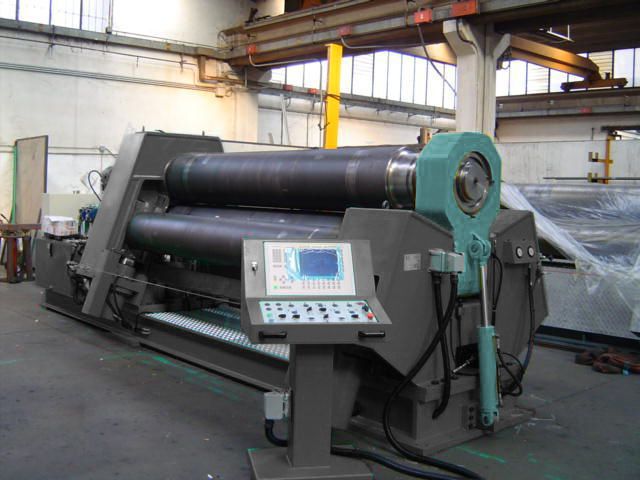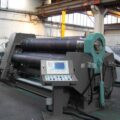Safety and Prevention: Fundamental Aspects in the Use of the Plate Roller
The plate roller is a key machine in many production processes, used to deform metal sheets or flexible materials by applying force and pressure through rotating rollers. However, due to its power and complexity, it also involves significant operational risks. In this article, we explore the importance of adopting a rigorous safety approach when using a plate roller, in order to protect operators, equipment, and the quality of the final product.
- Safety and plate roller: an inseparable pair
- The most common risks when using the plate roller
- How to prevent accidents during plate roller operation
- Plate roller and training: the key role of operators
- Inspections and maintenance for a safe plate roller
1. Safety and plate roller: an inseparable pair
Using a plate roller requires constant attention. It’s not just about optimizing production, but also about ensuring a safe working environment. A plate roller works on resistant materials, applying substantial force through rotating rollers. This means that even a minor mistake can lead to serious injuries or material damage. Safety, therefore, is not an option but an obligation. Managing safety involves more than just installing protective devices—it also requires planning activities, proper training, and continuous monitoring of the machine’s operational conditions.
2. The most common risks when using the plate roller
Some of the main hazards associated with the use of a plate roller include the risk of limb entrapment, which can occur if hands or fingers come into contact with the moving rollers. There is also the danger of material being ejected, as deformed sheets or fragments can be violently projected. Slips or falls may result from the presence of oil, lubricants, or scraps on the work floor. In cases where the plate roller operates at high temperatures, there’s also a risk of burns due to the rollers reaching elevated heat levels. Additionally, electrical or mechanical hazards may arise from malfunctions, makeshift maintenance, or outdated equipment. Fortunately, many of these risks can be significantly minimized through preventive measures and by fostering a strong safety culture.
3. How to prevent accidents during plate roller operation
Prevention is always better than reacting to an incident after it occurs. The first step is installing both fixed and movable guards, such as physical barriers, transparent shields, and enclosures, which prevent direct contact with dangerous parts of the machine. Emergency stop buttons should be located in multiple, easily accessible points. A visual inspection must be performed before each start-up, checking the condition of the materials, roller positioning, and the absence of foreign objects. A locking system must prevent the plate roller from operating if the safety guards are open. Proper lighting and clear signage are also important to highlight hazardous areas and improve visibility during operation. Additionally, maintaining a correct posture, wearing slip-resistant footwear, and keeping the area around the plate roller clear of unnecessary objects all contribute to safer operation.
4. Plate roller and training: the key role of operators
Even the most advanced safety systems are ineffective if the plate roller is operated by untrained personnel. Operator training is therefore a critical investment. Workers must be able to identify potential hazards before they occur, correctly perform all operational steps—from loading material to adjusting the rollers—react promptly in case of malfunctions, and use personal protective equipment properly. Besides initial training, it’s essential to organize regular refreshers, emergency drills, and discussion sessions to share any issues encountered during production.
5. Inspections and maintenance for a safe plate roller
Ensuring the safe operation of a plate roller also relies on consistent and scheduled maintenance. A well-maintained machine drastically reduces the risk of malfunctions, accidents, or unexpected downtime. It’s important to regularly inspect the rollers and their supports to avoid deformations or uneven wear. The electrical and pneumatic systems, including sensors, cables, valves, and control buttons, should also be routinely checked. Periodic lubrication is necessary to ensure smooth and friction-free operation. Safety tests, such as emergency stop simulations and verification of active protections, are equally vital. Every maintenance action should be logged in a dedicated maintenance register, which can also be useful during audits or inspections.
The plate roller is an extremely valuable machine, but its power demands a strict safety approach. Implementing preventive measures, adequately training operators, carrying out regular checks, and complying with safety regulations not only protects people but also improves the efficiency and productivity of the facility. A company culture focused on prevention allows the full potential of the plate roller to be safely and effectively realized, turning a complex machine into a reliable and secure tool for any industrial process.

